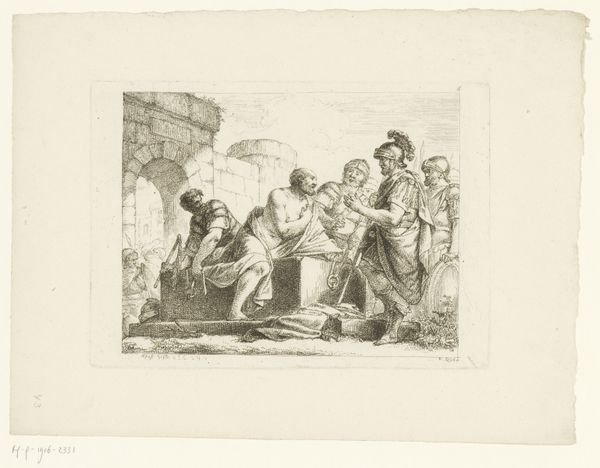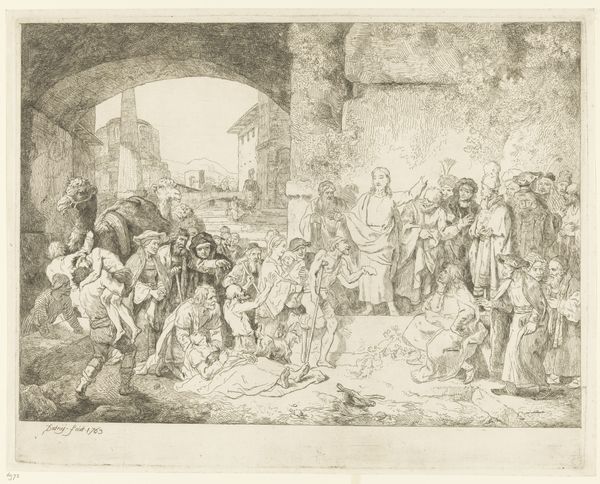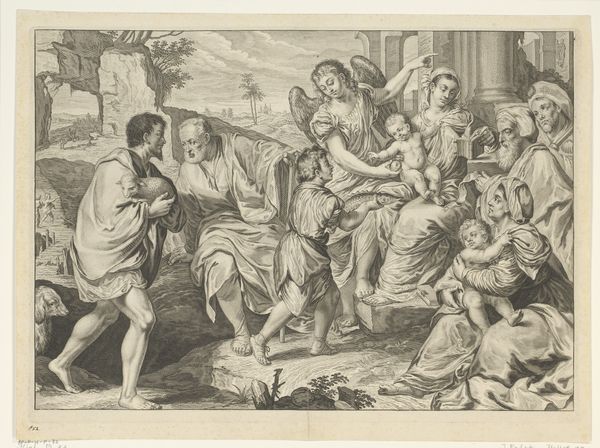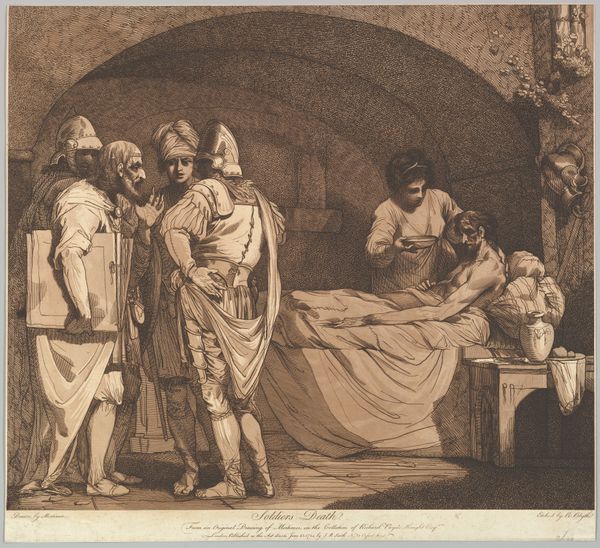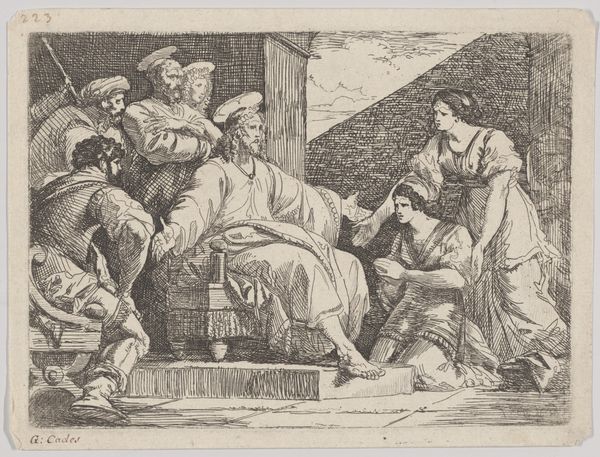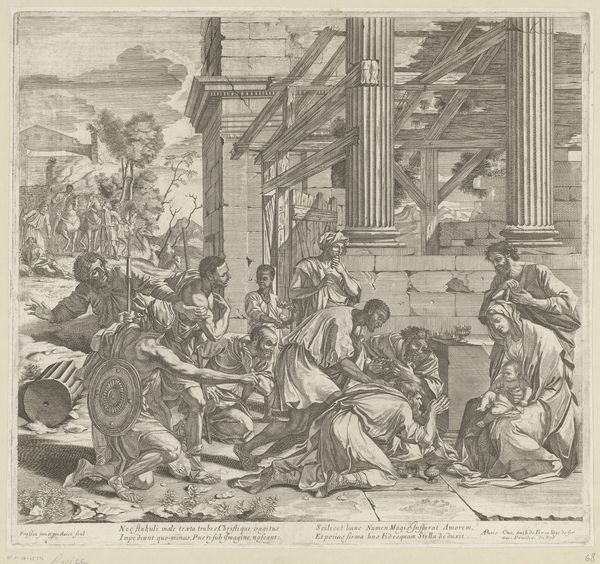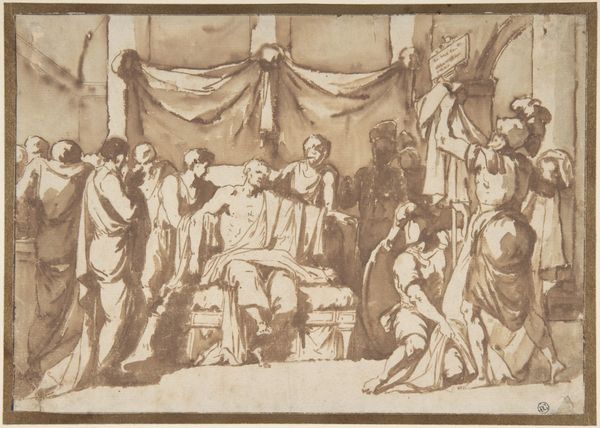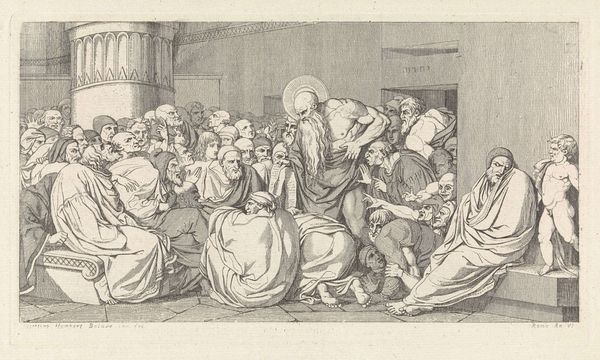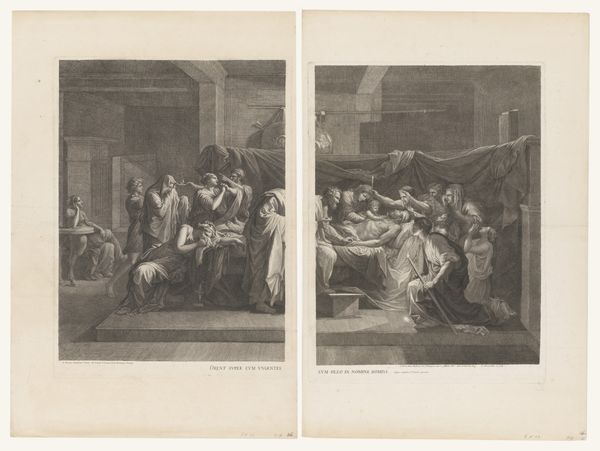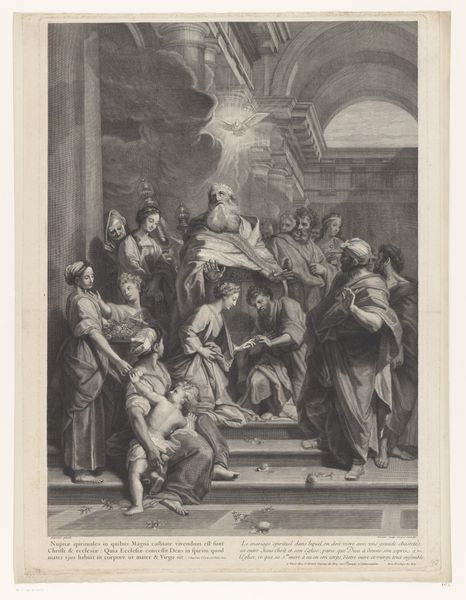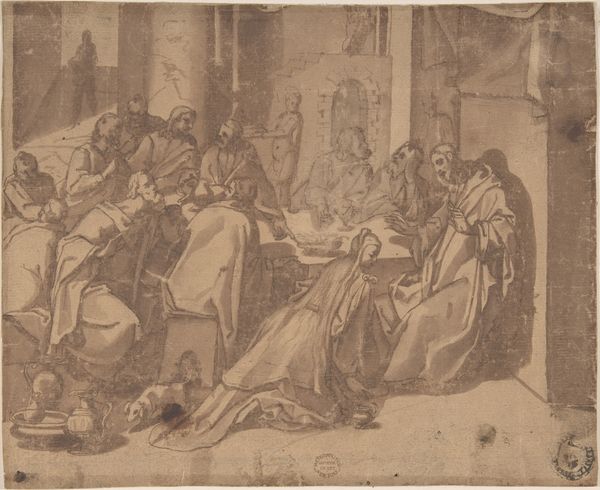
engraving
#
neoclacissism
#
narrative-art
#
greek-and-roman-art
#
old engraving style
#
figuration
#
history-painting
#
academic-art
#
engraving
Dimensions: height 229 mm, width 342 mm
Copyright: Rijks Museum: Open Domain
Editor: This is "Socrates Dictating His Testament," an engraving from 1800 by Joseph Abel, here at the Rijksmuseum. It's got a very stark, dramatic feel to it with all that black and white. Everyone seems frozen in place, like a theatrical tableau. What kind of visual language do you see at play here? Curator: The power of this image lies in its ability to freeze a moment rich with symbolic weight. Look at Socrates himself, the only figure with exposed torso, suggesting a kind of vulnerability, but also strength and intellectual power. Note how his gestures command the scene. Editor: Yes, he’s definitely the focal point! Is he positioned that way to signal some cultural idea about death? Curator: Absolutely. The image uses recognizable classical visual cues: light and shadow contrast – the "tenebrism" which gives the scene dramatic flair is related to both enlightenment ideals and emotional undercurrents. Do you notice how the scene is carefully framed, to create this effect? Editor: It’s almost stage-like with the dark archway framing everything. Curator: Exactly! It isolates the figures. Within this space, Socrates is not merely dictating a will; he is making a final, crucial statement of his beliefs, encapsulating the essence of his philosophy. Think about the tradition of "Last Words", what emotions and philosophical concerns it might provoke! Editor: I see it. The way he is centered gives this ordinary moment gravity! Curator: Precisely. And think about what Abel wanted to convey to *his* audience, immersed in Enlightenment thought and grappling with their own ideas of citizenship, virtue, and legacy. What message about dying with purpose, or acting with courage and wisdom does it send? It captures cultural memory that persists. Editor: This really highlights how artists can use specific settings and figure placement to transmit cultural ideals. I’ll definitely keep an eye out for how visual storytelling works like that in other art, too. Curator: It is a complex thing, because what symbols transmit shifts with context and over time. The meaning is there to be deciphered – it changes as our relationship with cultural symbols evolve!
Comments
No comments
Be the first to comment and join the conversation on the ultimate creative platform.
